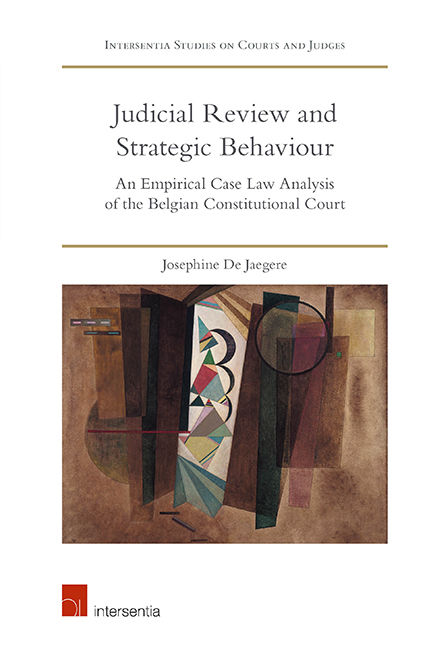 Judicial Review and Strategic Behaviour
Judicial Review and Strategic Behaviour Book contents
- Frontmatter
- Foreword
- Acknowledgements
- Contents
- Introduction
- PART I NORMATIVE FRAMEWORK: THE DELIBERATIVE PERFORMANCE OF CONSTITUTIONAL COURTS
- PART II THE CONTOURS OF JUDICIAL DECISION-MAKING
- PART III EMPIRICAL ANALYSIS OF THE BELGIAN CONSTITUTIONAL COURT'S CASE LAW
- Chapter 4 Translating Case Salience into Measurable Explanatory Variables
- Chapter 5 Case Outcomes
- Chapter 6 Citation Practices
- Chapter 7 Proportionality Analysis
- Conclusion
- Codebook
- Bibliography
- Index
- About The Author
Chapter 4 - Translating Case Salience into Measurable Explanatory Variables
from PART III - EMPIRICAL ANALYSIS OF THE BELGIAN CONSTITUTIONAL COURT'S CASE LAW
Published online by Cambridge University Press: 26 June 2019
- Frontmatter
- Foreword
- Acknowledgements
- Contents
- Introduction
- PART I NORMATIVE FRAMEWORK: THE DELIBERATIVE PERFORMANCE OF CONSTITUTIONAL COURTS
- PART II THE CONTOURS OF JUDICIAL DECISION-MAKING
- PART III EMPIRICAL ANALYSIS OF THE BELGIAN CONSTITUTIONAL COURT'S CASE LAW
- Chapter 4 Translating Case Salience into Measurable Explanatory Variables
- Chapter 5 Case Outcomes
- Chapter 6 Citation Practices
- Chapter 7 Proportionality Analysis
- Conclusion
- Codebook
- Bibliography
- Index
- About The Author
Summary
INTRODUCTION
In the previous chapter, building on judicial behaviour theories, general expectations were set forth about the Belgian Constitutional Court's behaviour. In particular, it was argued that strategic behaviour can be expected in salient cases. But how to identify these salient cases? While in the US context a case is often considered salient simply because it has survived the docket control, this cannot be said for cases before the BeCC where similar selection mechanisms do not exist. Moreover, considering the broad access possibilities and large set of reference norms, it is easier to trigger the involvement of the Court, which increases the probability it will be asked to adjudicate salient cases. When identifying appropriate salience measures, the specific setting in which a Court functions should be taken into account.
In this chapter, the selection of salience measures that can be reasonably integrated as explanatory variables in the statistical analysis of the Court's case law is explained. Importantly, these measures should be determined by objective, measurable facts instead of relying on some subjective evaluation. In addition, they should indicate contemporaneous salience, meaning that the case was salient at the time the judges were resolving it, regardless of retrospective considerations. Also, while the traditional approach in judicial behaviour studies is to rely on one operationalisation of case salience, in this book various measures are combined. Hence, more refined inferences can be drawn about the ways in which different aspects of case salience are related to the choices judges make.
Three potential measures of case salience were already put forward: (1) the participation of a large, diverse group of litigants; (2) media coverage during the decision-making procedure; and (3) a deliberation in plenary session.
Essentially, the Belgian database includes a range of information containing variables measuring who participated in the procedure, the number of newspaper articles published on each case and the composition of the Court (see Annex). In what follows, an overview is given of these variables and how they relate with each other and with other case features.
- Type
- Chapter
- Information
- Judicial Review and Strategic BehaviourAn Empirical Case Law Analysis of the Belgian Constitutional Court, pp. 127 - 166Publisher: IntersentiaPrint publication year: 2019
